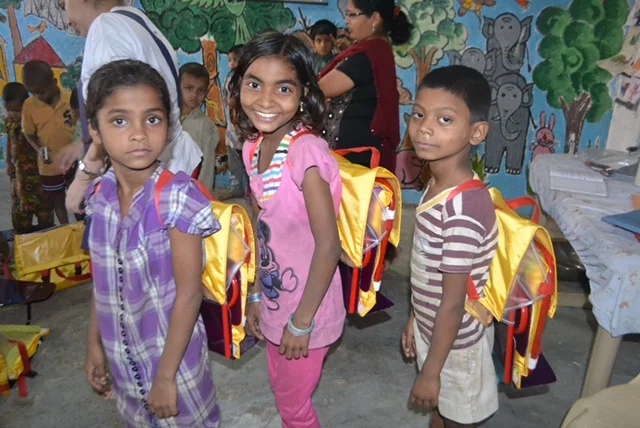….So says Riddhi Shah (27), a 2017 recipient of a Margaret McNamara Education Grant and candidate for a Master’s degree in City and Regional Planning at MIT in Boston, Massachusetts.
Riddhi is specializing in City Design Development at MIT where her objective is to look to the gap between architecture and planning in the public space, specifically at the relationship of an entire physical space and its effect on children. In particular, Riddhi wants to study how “physical infrastructure restricts children from pursuing easy childhood activities like playing and studying.”
This is an extension of the work she has done in India where she observed that children from ages 4 to 9 being watched in mobile daycare/crèches at developers’ construction sites used those facilities primarily to make bathroom visits and to take meals, not to learn. These crèches, provided for the protection of children against safety hazards of construction sites, are often too uncomfortable to facilitate the children’s sitting through lessons with no work space and seating on the ground. This led to Riddhi’s design of the “Kumej” – a knapsack which turns into a desk for children. Kumej is a combination of the Hindi words for chair (“Kursi”) and table (“Mej”).
Riddhi won a National Student Challenge for her design which has undergone many revisions with prototypes being tested at NGOs and local schools such as Holy Mother School in the Malad Malwani slum in Mumbai. Once production can achieve economies of scale, the Kumej is expected to cost USD 10 per unit. Riddhi’s hope is initially to partner with real estate developers and NGOs to distribute Kumejs to mobile crèches/daycares and street schools in urban centers. She hopes that their proven success in this setting will allow her to approach local governments to reach out to rural schools where, according to a recent UNICEF/World Bank Group study, an estimated four out of five children live in extreme poverty in a country which houses a full 30% of the world population of children living in extreme poverty.* At current estimates of India’s population of 1.34 billion people, the number of young children in India aged newborn to 9 years old is likely to be as high as 267 million … a very large proportion of whom are cared for in the crèches, street schools and rural schools targeted by Riddhi’s product.
Since “school plays a major role in shaping a child’s future,” Riddhi’s long-term objective is to continue to develop and implement design plans to improve education in developing and crisis countries by making the educational environment more comfortable, welcoming, and healing at the grassroots level with minimum resources. She is likely to be successful; as one of her referees puts it, Riddhi shows “exceptional promise as a socially-engaged architect. Kumej is the best example I have seen in several years of design’s ability to promote social wellbeing.”
Riddhi’s studies and efforts provide a testament to the enabling work of MMEG grants and the amplification effect of supporting continuing education for our recipients. Her work and that of the 300 plus recipients of Margaret McNamara Education Grants provide benefits in real terms in grantees’ home countries. As Riddhi says in her application for her grant, “I realize that architecture is not just about building houses. If architects can divert some of their attention to rural areas where the majority of the population lives, simple and powerful innovations will definitely help in transforming the rural life. Design can help create more engaging spaces to help a child’s mind develop freely.”
Brigid Holleran
*Ending Poverty: A Focus on Children, UNICEF and The World Bank Group, October 2016.
The invention idea Kumej is filed under pending Indian National Patent 3522/MUM/2013 (Equally owned by: Ami Matthan, Avinav Venkatachalam, Riddhi Shah and Vishesh Kehtawat)





